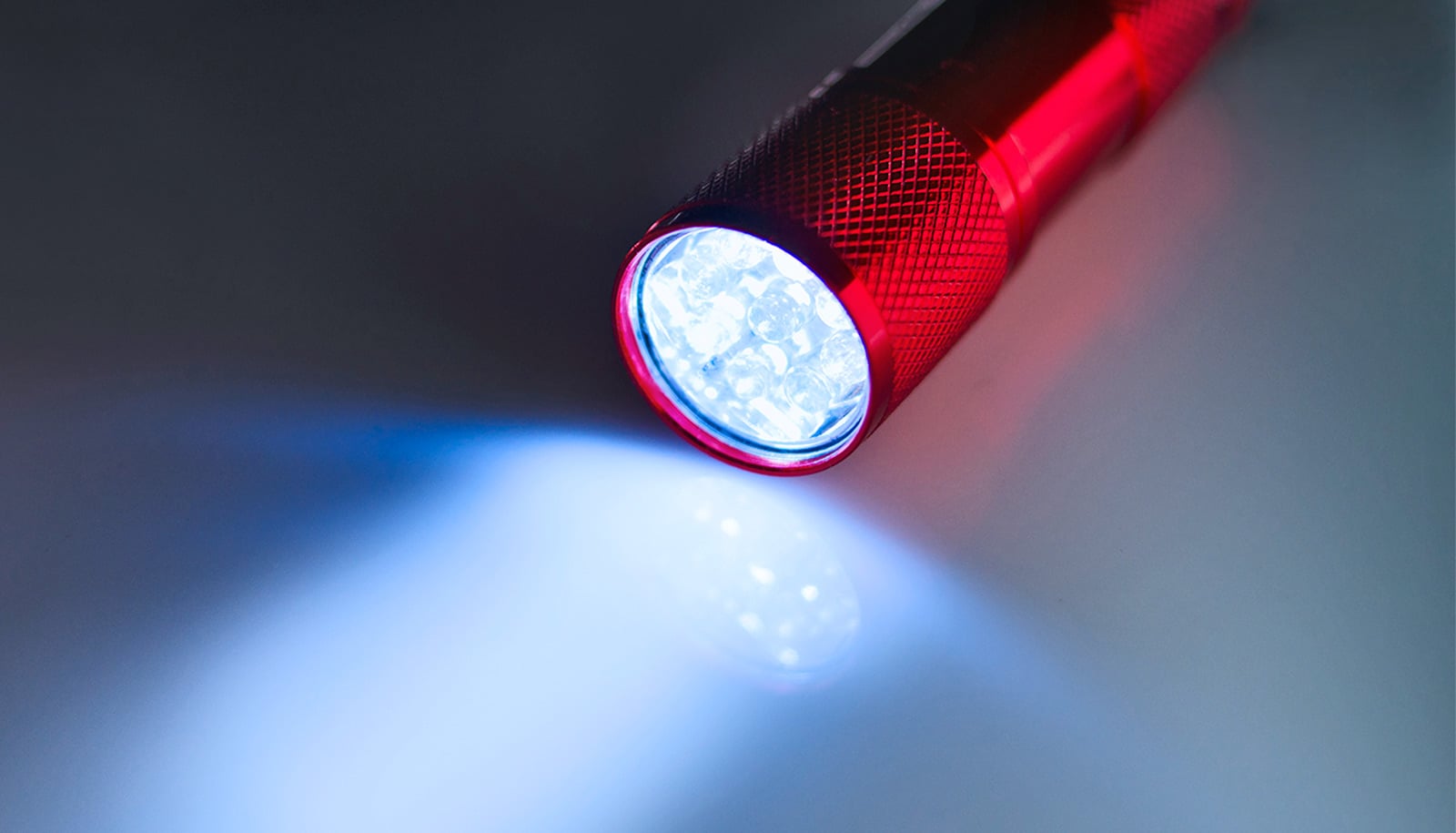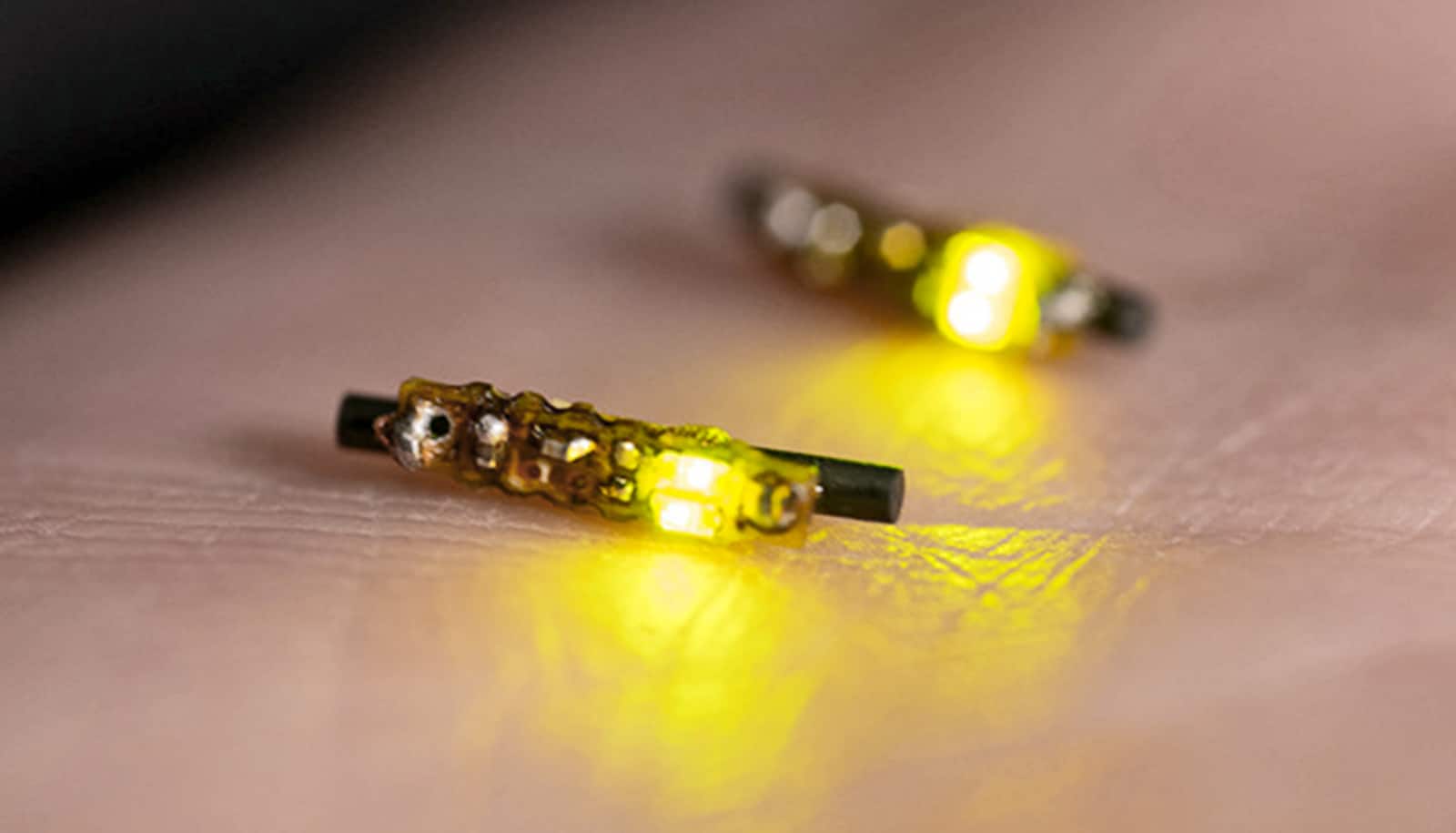New research could enable cheaper, smaller, and more efficient optical frequency synthesizers, which have traditionally been large, power-hungry devices.
Only a few decades ago, finding a particular channel on the radio or television meant dialing a knob by hand and then making small adjustments to home in on the right signal. That’s no longer the case, thanks to something called a radio-frequency synthesizer, which generates accurate signal frequencies.
“We took something that occupied a whole optical bench, weighed 50 pounds, and used a kilowatt of power and made it orders of magnitude more efficient…”
While radio frequency control has long since been mastered, optical frequency control still exists in the bygone “tuner knob” era. This is because optical frequencies are so much higher (200 million megahertz) than radio frequencies (100 megahertz). Setting the absolute frequency, or color, of light emitted from a laser with precision is difficult because laser frequencies tend to drift as radio stations once did.
Optical frequency synthesizers provide unprecedented performance but until now have been large, expensive, and power hungry. To address these limitations, the Defense Advanced Research Projects Agency (DARPA) in 2014 launched the Direct On-Chip Digital Optical Synthesizer (DODOS) program.
Now, researchers have made advances in chip-based integrated photonics and nonlinear optics that enable miniature, energy-efficient components for an optical synthesizer. The findings appear in the journal Nature.
Shrinking the optical frequency synthesizer
“We took something that occupied a whole optical bench, weighed 50 pounds, and used a kilowatt of power and made it orders of magnitude more efficient by integrating the key elements onto silicon photonic integrated circuits,” says John Bowers, professor of electrical and computer engineering and chair in nanotechnology at the University of California, Santa Barbara, where he is also director of the Institute for Energy Efficiency.
Optical frequency synthesizers have proven extremely valuable in a variety of scientific endeavors, from searching the skies for far-off planets to detecting chemicals through sensitive laser spectroscopy and enabling high-precision light detection and ranging (LIDAR) by using light as a ruler to measure distance.
“The development of optical frequency synthesis has significantly enhanced our ability to accurately and precisely measure time and space,” says Gordon Keeler, the DARPA program manager leading DODOS. “However, our ability to leverage the technology has been limited. Through DODOS, we’re creating technologies that will enable broader deployment and unlock numerous applications.
“The goal is to shrink laboratory-grade capabilities down to the size of a sugar cube for use in applications like LIDAR, coherent communications, chemical sensing, and precision metrology.”
How it works and why it matters
Combining a pair of frequency combs, several miniature lasers, and other compact optoelectronic components, the researchers replicated the capabilities of a tabletop optical frequency synthesizer on three microchips, each less than 5 mm x 10 mm in size.
Lasers could make beer and bread even better
Coauthor Luke Theogarajan, professor of electrical and computer engineering at UC Santa Barbara, and his students designed and developed electrical integrated circuits to control the synthesizer, which can tune over 50 nanometers and deliver a frequency stability of 7 x 10-13 after one second of averaging—matching that of the input reference clock. A stable clock is important.
“The more accurate the clock is, the better you can resolve distance or velocity or do navigation,” Bowers explains. “GPS has a certain resolution. Your phone will locate you to within a few meters. But if you had a better, more stable clock, you could triangulate more precisely and get better resolution. It’s called PNT, for ‘precision navigation and timing.'”
The scientists created the two miniaturized frequency combs by circulating laser light generated with single-color “pump” lasers around optical racetracks fabricated on silicon chips. Doing so correctly can produce many additional colors, yielding a spectrum that looks like a hair comb where each “tooth” is an individual color or frequency.
This is a significant departure from the tabletop version of an optical frequency synthesizer, which uses fiber optics, specialized mirrors, and large mechanical components built by hand to achieve a similar effect.
Can gold nanostars and lasers vaccinate against cancer?
The DODOS program is entering its final phase, during which researchers will work to integrate the individual components with electronics and fabricate a compactly packaged device suitable for use in future military and commercial optical systems. The synthesizer could have applications in navigation, spectroscopy, and astronomy.
The goal, Bowers notes, is to make this very precise miniature laser cost almost nothing.
Source: UC Santa Barbara



